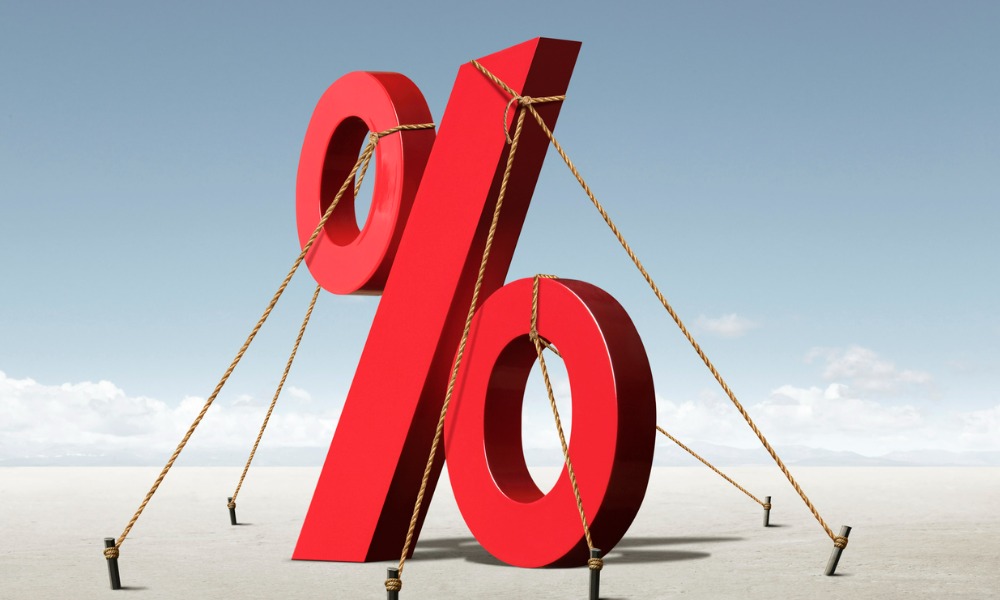Sonal Desai, CIO of Franklin Fixed Income analyzes the interplay between investment spending and fiscal policy in determining the future of economic growth

This article was produced in partnership with Franklin Templeton
Franklin Templeton's chief investment officer of Franklin Fixed Income, Sonal Desai, highlights that both escalating investment demands and a lenient fiscal approach in the U.S. are key drivers behind the upward trajectory of long-term real interest rates.
Based in Fort Lauderdale Florida, Desai emphasizes the importance of recognizing the distinct roles of these drivers, “Investors often merge these concepts, but identifying them separately—rising investment and substantial fiscal deficits—is crucial for a deeper understanding,” she explains.
She continues, detailing a significant shift toward increased investment is emerging and is expected to persist for several years. This trend is driven by several key factors.
Firstly, there is a pressing need to compensate for years of under-investment in both traditional and digital infrastructure. The latest report from the American Society of Civil Engineers[1] assigns a failing grade to overall U.S. infrastructure once again. Economists point out that delays and increasing maintenance costs are hindering economic performance, while civil engineers warn that structurally deficient bridges and outdated water infrastructure pose significant safety risks. Additionally, the United States falls behind other advanced economies in terms of infrastructure quality and spending.
Furthermore, geopolitical tensions are escalating defense spending across Western countries, and the explosive potential of Artificial Intelligence is fueling new investments in technology.
Green energy’s double-edged sword: growth versus productivity
The transition to green energy also necessitates substantial investment to bolster the role of renewables, while manufacturing sectors must innovate and strengthen their supply chains. Desai cautions, however, that not all investments will yield immediate productivity gains. “For example, the green energy transition, while crucial, primarily involves replacing existing capital, which boosts economic growth through higher expenditures but does not raise productivity," she explains. Citing a report by Jean Pisani-Ferry[2], Desai adds that such investments could “likely reduce productivity growth by a quarter percentage point annually for the next few years and also increase inflation risks over the next decade.”
Despite these challenges, Desai remains optimistic that a substantial portion of these investments will eventually enhance productivity growth. “The acceleration in U.S. productivity during 2023 gives hope, even if the weak first quarter of this year counsels caution,” she states. This potential increase in productivity growth could drive real economic growth, challenging the Secular Stagnation theory and suggesting a higher equilibrium interest rate in the long run.
Persistently large fiscal deficits result in pressure on bond supply
Separately, the United States has seen a consistent relaxation of fiscal policies, which independently influences interest rate projections. “The U.S. government has been running a massively loose fiscal policy for a very long time now,” Desai remarks. The Congressional Budget Office (CBO) projects that the deficit will average 5.5 percent of GDP for the next five years before rising further, a trend that has seen the debt stock surge to nearly 100 percent of GDP.
The ongoing need to fund large fiscal deficits puts immense pressure on bond supply, leading to lower bond prices and higher interest rates. Desai warns of the consequences of this trend, “A large fiscal deficit, growing debt, and high interest rates create a vicious spiral that makes it harder and harder to reduce the deficit.” With non-defense discretionary spending already a small part of the U.S. budget, the rising cost of interest expenditures, projected to more than double in the next decade, could severely limit funding for vital public services.
Assessing the long-term impacts on interest rates
Moreover, Desai questions the assumptions underpinning current fiscal forecasts. “They assume that the interest rate on federal debt will remain under 3.5 percent over the next decade,” she notes, suggesting that a more realistic scenario might see rates closer to the pre-global financial crisis average of about 6 percent. “If the average interest rate on debt were to rise even just one percentage point above the CBO assumption, within 10 years interest expenditures would be more than double their current level.”
Regardless of how you look at it, bringing the U.S. budget deficit under control will require substantial efforts, which seem implausible in the current political climate. Meanwhile, loose fiscal policy will likely continue to exert upward pressure on interest rates.
Desai warns, “I have been arguing for some time that equilibrium real interest rates are likely much higher than the markets and the Federal Reserve (Fed) still seem to assume—with the neutral fed funds rate above 4 percent rather than at the Fed’s current forecast of about 2.5 percent, and 10-year U.S. Treasury yields correspondingly higher. The confluence of loose fiscal policy and a rising investment trend can only strengthen my conviction in this higher interest rates outlook.”
Important Legal Information
Disclaimer This material is intended to be of general interest only and should not be construed as individual investment advice or a recommendation or solicitation to buy, sell, or hold any security or to adopt any investment strategy. It does not constitute legal or tax advice.
The views expressed are those of the investment manager, and the comments, opinions, and analyses are rendered as at publication date and may change without notice. The information provided in this material is not intended as a complete analysis of every material fact regarding any country, region, or market.
Commissions, trailing commissions, management fees, brokerage fees, and expenses may be associated with investments in mutual funds and ETFs. Please read the prospectus and fund fact/ETF facts document before investing. Mutual funds and ETFs are not guaranteed. Their values change frequently. Past performance may not be repeated.
Franklin Templeton Canada is a business name used by Franklin Templeton Investments Corp.
[1] Source: 2021 Report Card for America’s Infrastructure, March 2021, American Society of Civil Engineers (ASCE)
[2] Source: Pisani-Ferry, Jean and Mahfouz, Selma. “The economic implications of climate action.” Republique Francaise. November 2023. There is no assurance that any estimate, forecast or projection will be realized.



